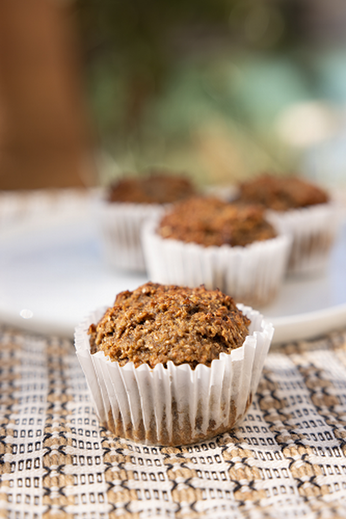Fiber is Your Best Friend

One of the most important sources of good nutrition is fiber. Your body needs an adequate amount of fiber every single day 25 to 35 grams. As a vehicle for feeding the microbiome — healthy community of bacteria — in your gut, fiber is the foundation of health and the superstar of regulating glucose and maintaining a healthy weight. Research has shown that high-fiber foods may have other heart healthy benefits, such as reducing blood pressure and inflammation. So why are many Americans falling short when it comes to consuming enough fiber?
Processed foods — inexpensive and loaded with sugar, salt and saturated fats — are partly to blame for a lack of fiber in our diets. Busy schedules and sedentary lifestyles also play a role in promoting routines based on convenience and exhaustion. Perhaps it is just a little too easy to pick up fast food or to throw a frozen pizza in the oven. Being tired can trigger cravings for comfort foods — processed carbohydrates that break down quickly, spiking blood sugar.
“I’m very concerned about the alarming rate of obesity in this country and medical illnesses that are associated with obesity,” says Mamta Mehta, MD, Board Certified in Gastroenterology. “We need to learn how to eat. Fibrous foods are essential for our overall well-being, from regulating our metabolism to improving our gut health.”
“Studies have shown that fiber has multiple benefits,” notes Dr. Mehta. “It adds bulk and can make you feel full faster, thereby decreasing your appetite. It also attracts water and once inside the intestine, it turns into a gel which traps carbohydrates and slows the absorption of glucose.”
“Some epidemiological studies show that fiber consumption is inversely proportional to the risk of colon cancer,” continues Dr. Mehta.
Soluble and insoluble fiber
There are two kinds of fiber — soluble and insoluble. Some foods contain one or the other, while some contain both.
“Fiber foods serve as prebiotics, feeding the probiotics in our gut system that helps maintain our immune system,” says Registered Dietitian Rosalind Elemy, MA, RDN, CSO. “Soluble fibers may help in reducing cholesterol and improving blood sugar levels.”
Soluble fiber foods
Apples, pears, avocados, asparagus, apricots, beans, and legumes are just some of the fruits and vegetables containing soluble fiber. Certain whole grains, such as oats, are also a good source of soluble fiber.
Insoluble fiber foods
Insoluble fiber remains unchanged during digestion. It helps in the normal movement of foods through the intestinal tract and is often found in the edible seeds and skins of fruits such as berries and bananas. It is also found in whole grains, wheat bran, nuts and vegetables.
“Potatoes with the skin and cruciferous vegetables such as broccoli, cabbage, Brussel sprouts, corn, greens, green beans and squash are good sources of insoluble fiber,” says Elemy. “Basically, any vegetable is going to be a good source of fiber.”
“Incorporating more legumes and beans into one’s diet helps increase the amount of fiber. Drinking plenty of water is also helpful,” she says.
When first increasing dietary fiber, start slowly to prevent bloating, allowing your body time to adjust.
“If someone is interested in increasing their dietary fiber, it may help to work with a dietitian who can help them in deciding which foods to eat to get the fiber they need,” adds Dr. Mehta.
Banana Avocado Bran Muffin
Contributed by Rosalind Elemy, MA, RDN
Serves 12
Ingredients
1 cup whole wheat flour
1 cup wheat or oat bran (Bob’s Red Mill® or other)
1 teaspoon baking soda
1 teaspoon cinnamon
2 mashed, very ripe bananas — large
1 medium to large avocado, mashed — and just ripe, not overly ripe
1 egg
¼ cup brown sugar (packed)
½ cup chopped walnuts or pecans
½ cup chopped dates (pit and chop dates and put in a separate bowl, stirring in some of the flour mixture to keep dates from sticking together before adding them to the mix)
Heat oven to 375 degrees Fahrenheit
Mix mashed banana and avocado together (mash by hand or in a food processor) before adding egg and brown sugar. Blend dry ingredients: flour, bran, baking soda and cinnamon. Combine dry ingredients with banana and avocado mixture, stirring until blended. Add nuts and chopped dates if desired. Batter will resemble thick cookie batter.
Spoon batter into muffin tins lightly coated with vegetable oil. Bake at 375 degrees Fahrenheit for 15 to 17 minutes or until muffin springs back slightly when touched lightly or a wooden toothpick comes out clean. The muffins will be fairly dense. Try not to overbake. Leave muffins in pan to cool for 10 minutes before removing from pan to cool on wire racks. A small spatula is helpful in removing the hot muffins.
Muffins can be double-bagged and frozen when completely cool.



